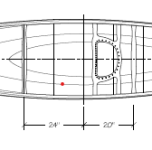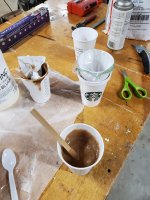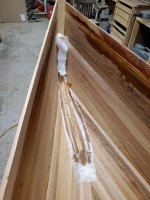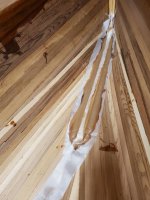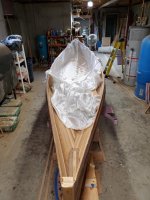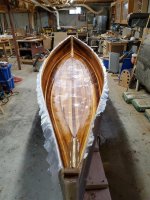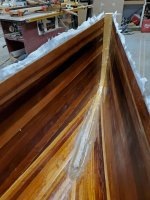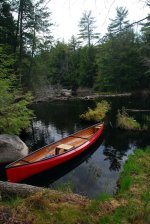I've never added thickened epoxy like that, I usually just push the glass down with a screw driver or some other flat edge, and epoxy generally fills in beside. On my first couple of Winter's solo's I put an extra strip of glass on the inside of the knuckle, but don't bother with any extra reinforcements now, the usual treatment seems to hold well.
Is station number 8 the actual dead centre of the canoe? I often question seat placement in an asymmetrical canoe, as the fullness of the canoe is mostly to the stern, so I feel the seat can go back a bit further. I always adjusted load with my packs, but I found the Raven to be quite forgiving with weight placement. As a tripping canoe, I was finding lines and running through them in white water, not trying to pull big moves to impress the hot grannies on the shoreline. Things like back ferries can be difficult in asymmetrical canoes, and when running white water you want to keep those stems loose, so if your seat is back you will want the heaviest things right in front of you.
If you are not bothered by a sliding seat, I suppose it could be useful, but you will want to watch the weight, the Raven is a girthy solo, and weight will start adding up quickly.
 . Also, do you have to smooth after applying the epoxy from the baggie?
. Also, do you have to smooth after applying the epoxy from the baggie?
